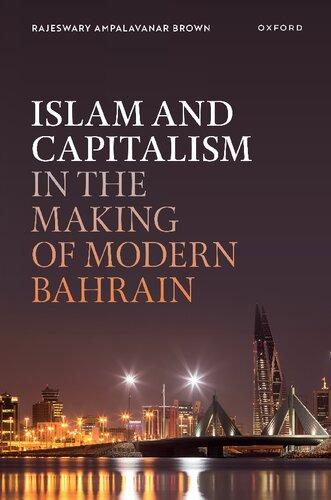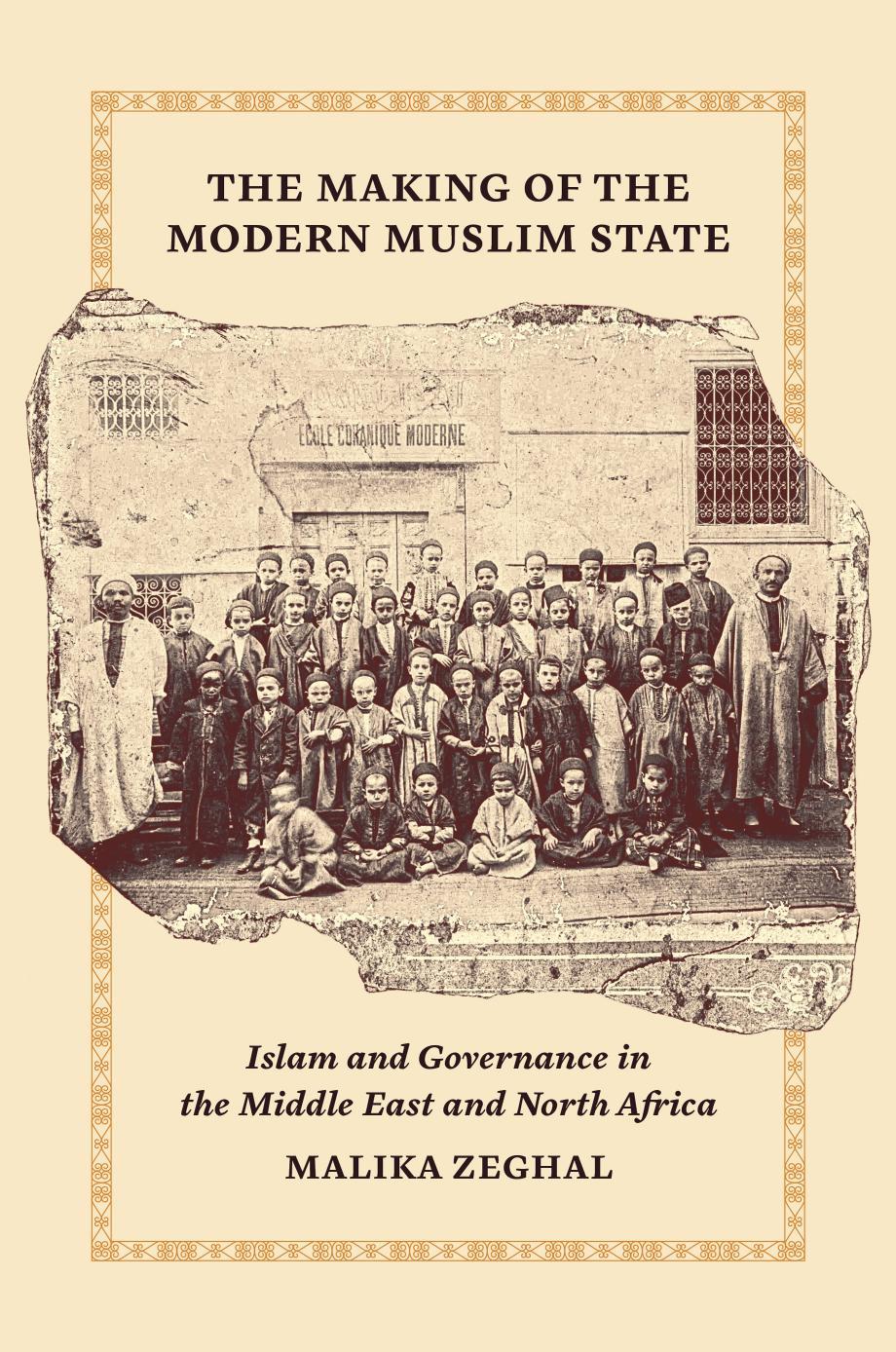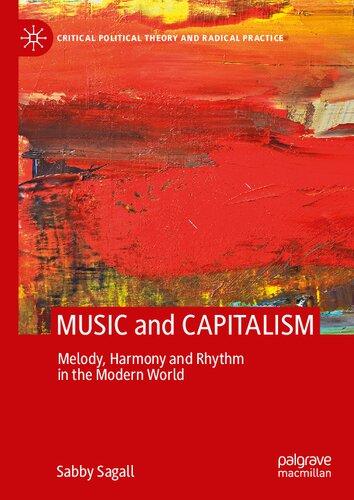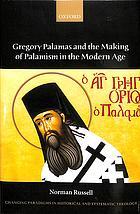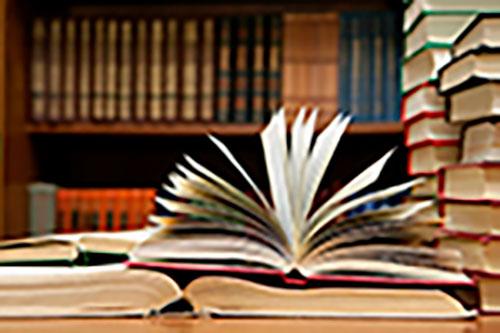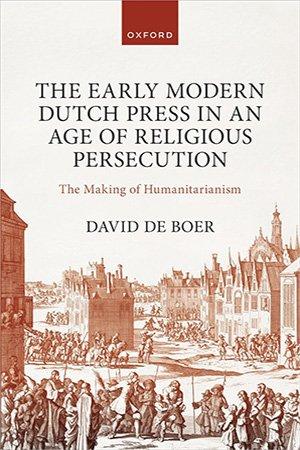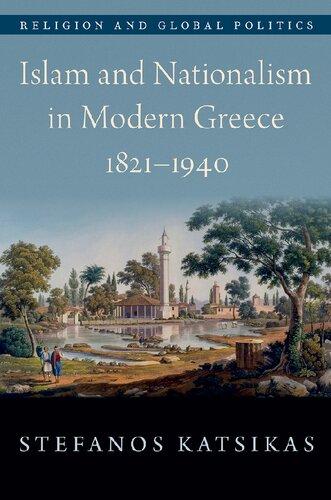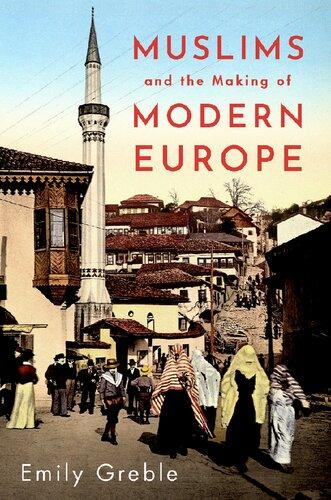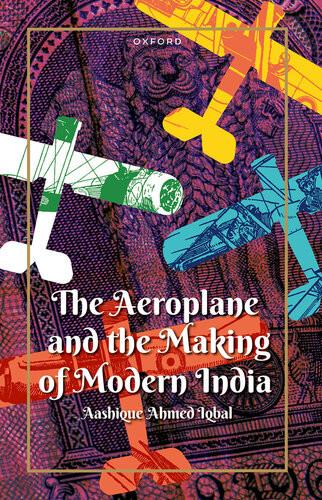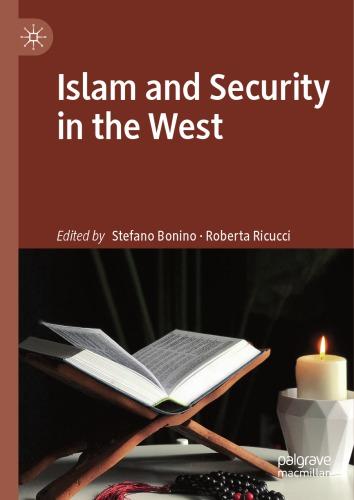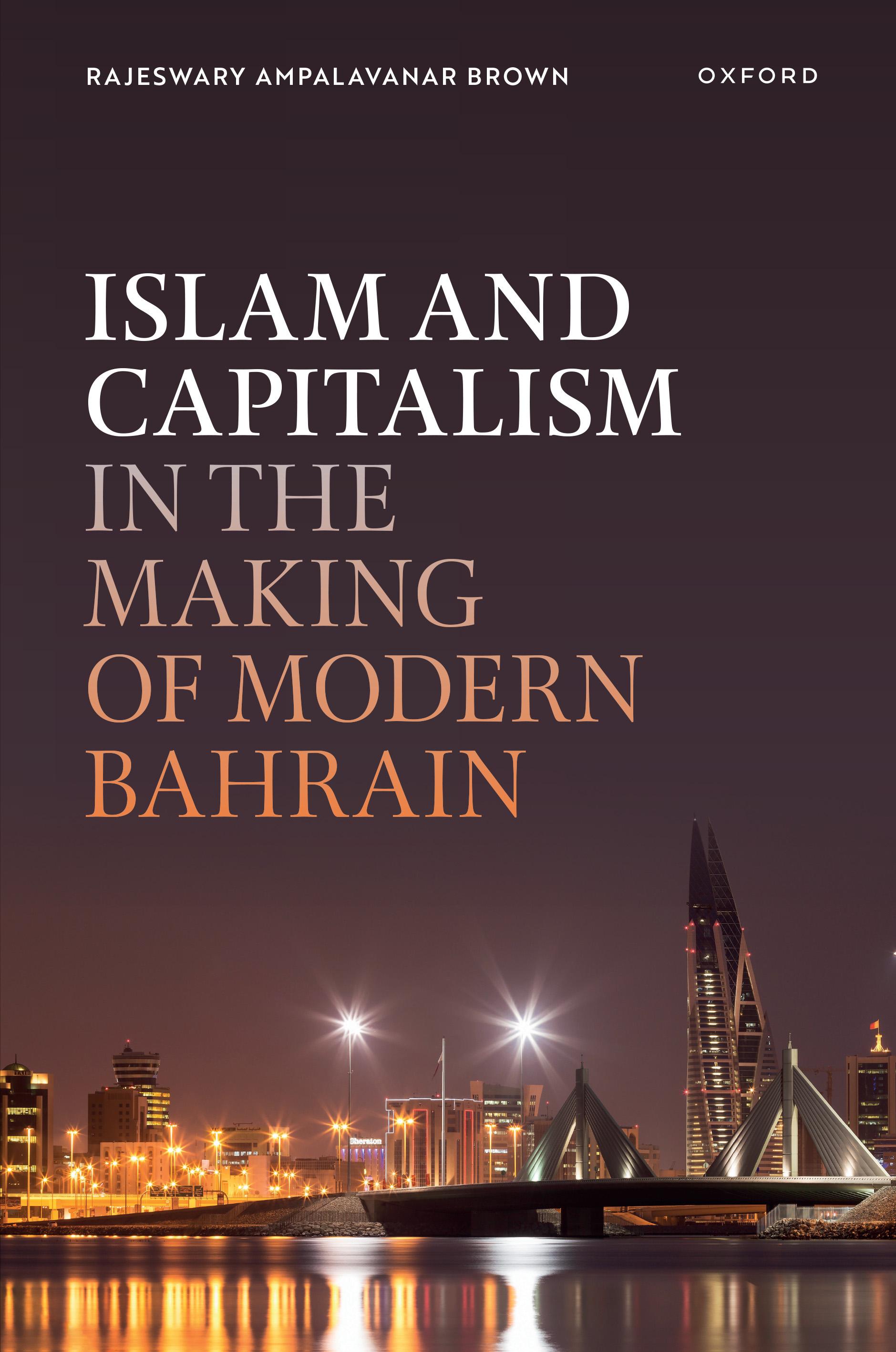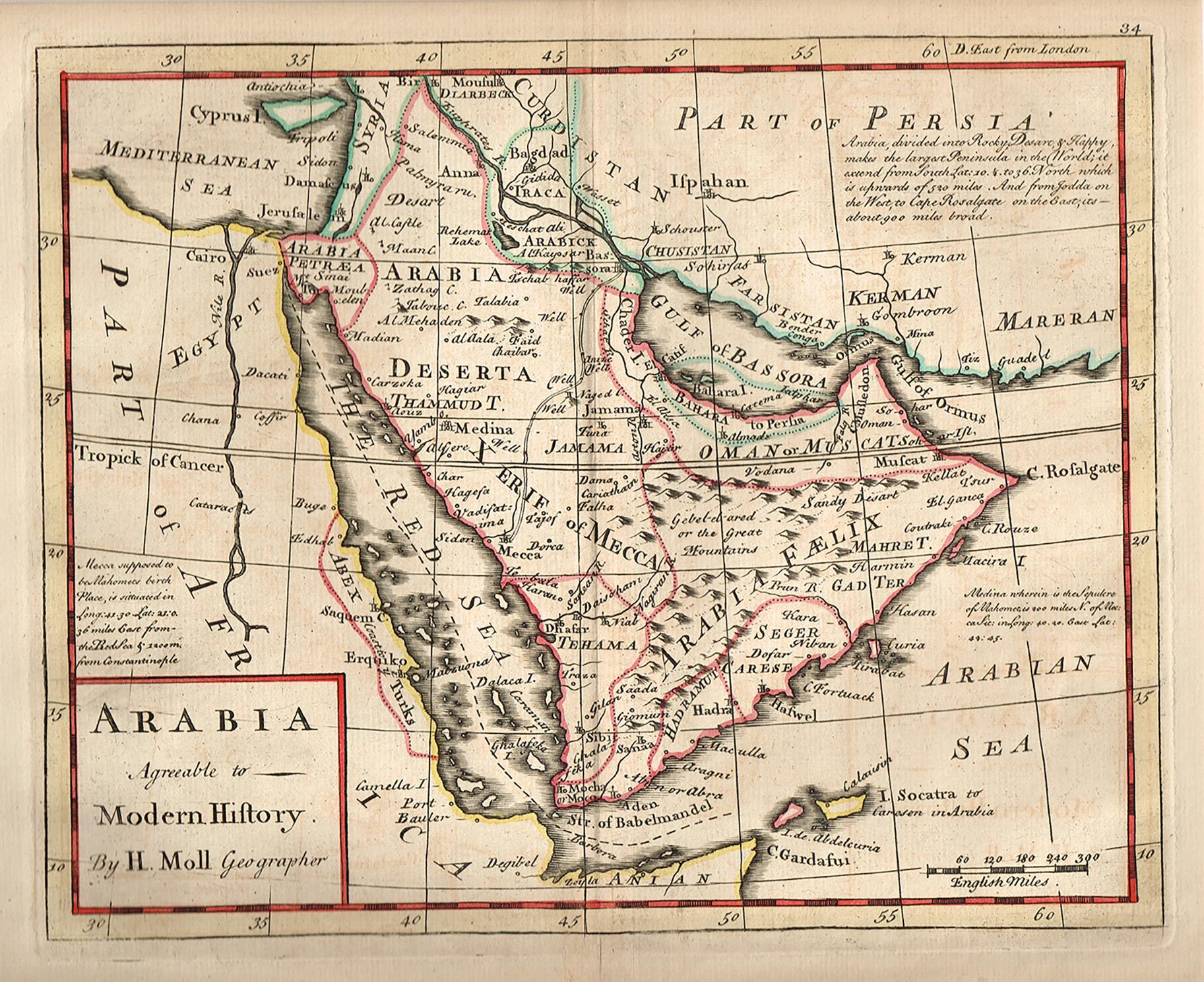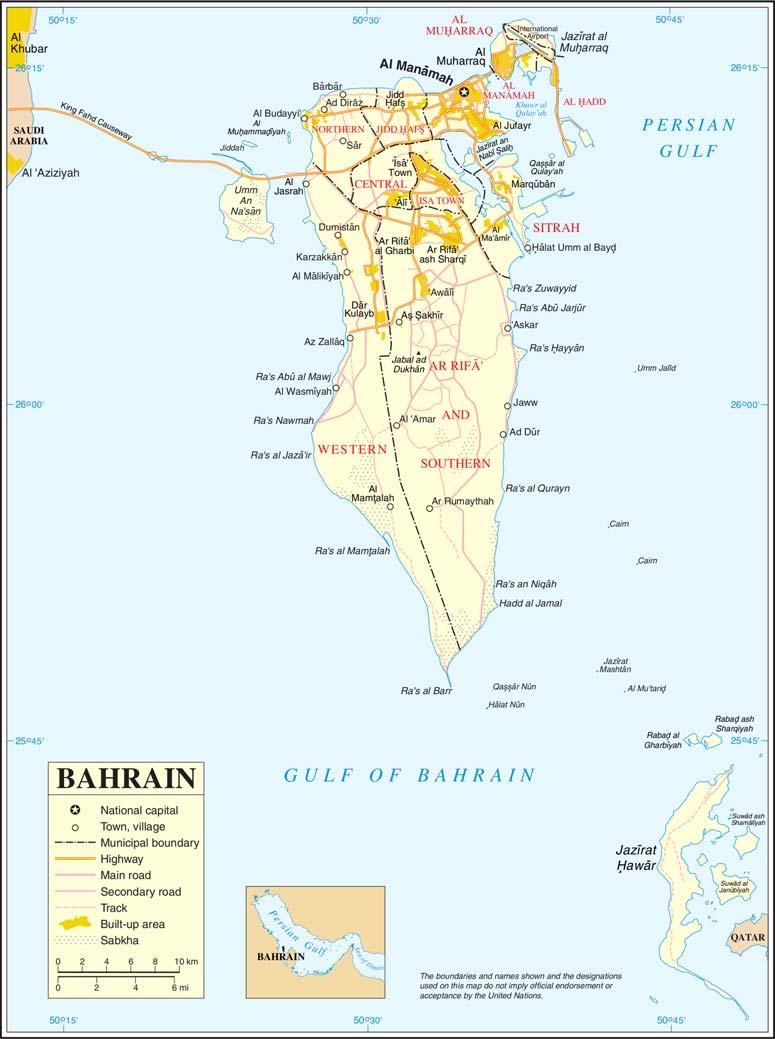IslamandCapitalism intheMakingofModern Bahrain
RajeswaryAmpalavanarBrown
GreatClarendonStreet,Oxford,OX26DP, UnitedKingdom
OxfordUniversityPressisadepartmentoftheUniversityofOxford. ItfurtherstheUniversity’sobjectiveofexcellenceinresearch,scholarship, andeducationbypublishingworldwide.Oxfordisaregisteredtrademarkof OxfordUniversityPressintheUKandincertainothercountries ©RajeswaryAmpalavanarBrown2023
Themoralrightsoftheauthorhavebeenasserted Allrightsreserved.Nopartofthispublicationmaybereproduced,storedin aretrievalsystem,ortransmitted,inanyformorbyanymeans,withoutthe priorpermissioninwritingofOxfordUniversityPress,orasexpresslypermitted bylaw,bylicenceorundertermsagreedwiththeappropriatereprographics rightsorganization.Enquiriesconcerningreproductionoutsidethescopeofthe aboveshouldbesenttotheRightsDepartment,OxfordUniversityPress,atthe addressabove
Youmustnotcirculatethisworkinanyotherform andyoumustimposethissameconditiononanyacquirer
PublishedintheUnitedStatesofAmericabyOxfordUniversityPress 198MadisonAvenue,NewYork,NY10016,UnitedStatesofAmerica
BritishLibraryCataloguinginPublicationData Dataavailable
LibraryofCongressControlNumber:2022950878
ISBN978–0–19–287467–2
DOI:10.1093/oso/9780192874672.001.0001
Printedandboundby
CPIGroup(UK)Ltd,Croydon,CR04YY
LinkstothirdpartywebsitesareprovidedbyOxfordingoodfaithand forinformationonly.Oxforddisclaimsanyresponsibilityforthematerials containedinanythirdpartywebsitereferencedinthiswork.
Ada,Andrew,Alasdair,andIan
Acknowledgements
Thisbookbeganwiththeaimtochallengetwoviews:thatIslamhadinhibited capitalistgrowthintheMiddleEast:thatShi’ismwasasourceoftensionthat invigoratedtheauthoritarianSunnistate.InfactShi’ismcoalescedaround theMat’am,builtonitshistoricaltransnationaltradingnetworks.
IwasextremelyfortunateinmakingcontactwithAdamSwallowandJade DixonatOxfordUniversityPress,bothofwhomwerecriticalinbringing thisbooktofruition.Iwillbeeternallygratefulfortheirprofessionalsupportandconstantencouragementthroughoftendifficulttimes.Iwasalso extremelyfortunateinbeingledthroughtheproductionprocessbyGangaa RadjacoumarandJennniferHinchliffe.Theirmeticulousattentiontodetail andtheirseeminglyendlesspatienceweresimplyremarkable.
IoweanenormousintellectualdebttomanyArabicscholarswhoaccepted meeventhoughIamnotanArabist.NelidaFuccaronotonlyinspiredmebut alsoassistedmewithinsightsthathelpedmetograspBahrain’ssovereignty anditsrelationswiththeGulfperiphery.MydeepestgratitudeisforAli AkbarBusheriofManama,aneruditescholarandatruefriend.Hepatiently translatedamajorityoftherelevantdocuments.Hisandhiswife’sunderstandingforthepastthreeyearshavenotonlysustainedmebuthavealso madeourmeetingsreallygoodfun.
MyclosefriendJonathanErcanbrackledmethroughthehugeliterature onIslamicfinancewithadaringinterpretationofclassicthinking.Myreview ofhis TheTransformationofIslamicLawinGlobalFinancialMarkets,which appearedin ModernLawReview inMayof2018,transformedme.Tomy mildastonishment,IhavebecomeakindofhistorianofBahrain.MyunderstandingofSyriaIoweentirelytoThomasPierret,aleadinghistorianof thatcountry.Ahighlyperceptivescholar,heofferedideasthatweretruly provocative,drawingonhistory,politicaltheory,andethnography.Imust alsogiveaspecialmentiontoNickFoster,whoseknowledgeofIslamiclaw, aswellasfriendshipandadvice,wereinvaluable.
IoweaconsiderableintellectualdebttomyhusbandIan,andtomysons AndrewandAlasdair.Theyarealwaysamajorsourceofinspirationandsupport.Thisbookisdedicatedtothem,andtomygranddaughterAda,who talksallthetime.Sheprovidessteadfastloveandassuranceforallofus.Her ebullientpersonalityisalwaysatreasure.
IwasveryfortunatetomeetAlaaAlaabedinKualaLumpur.Hergenerosity ledmetoreceivehelpfromhermotherinthecollectionofdataonBahrain’s stockmarket.Theircollectiveunderstandingofthecomplicatedhistoryofthe capitalmarketswasremarkable.Additionally,Iwasveryfortunatetomeet ManafYousufHamza,whogavemeacopyofhisexcellentPhDthesis.He wasalsoverygenerousinprovidingalltheimagesofBahrain,fromancient timestothepresent,thatappearinthisbook.OmidTorabiassistedmewith importantdataoncorporations.IdofeelsadthatAlaa,Manaf,andOmid, eachofwhomhasproducedanexcellentthesis,havenotbeenabletosee thempublished.Inthe1970s,OxfordUniversityPresshadanagentstationed inSingaporewhosoughtoutthesesbylocalscholarsforpublication.Iwasa fortunatebeneficiary.
TheworkofMuratCizakcaonIslamiccapitalismandfinancegreatly inspiredme.DermotKillingleyreadmanyofmychapterswithremarkable careandassignedmeaprogrammeofcorrections.MichaelCookreadmy chapteronIslamicfinance,MichaelLaffanmychapteronthewaqf.Derek Georgereproducedmyimageforthebackcover.Iammostindebtedto JuliaCharltonoftheITDepartmentatRoyalHollowayCollege,whodealt patientlywithmynear-endlessstrugglewithtechnology.
RanaMitterwassupportiveandinsightfulrightfromthestartofmystudy ofBahrain.IoweaconsiderableintellectualdebttoTirthankarRoyand hiswide-rangingworkonthemoderneconomichistoryofIndia,andto KhairuddinandtoChristianLekon,andtheirworkonIslam.ChrisBayly wasaninspirationalhistorianofAsiaandpartsoftheMiddleEast.Ithink often,withgreatrespect,ofJohnBastin,mygraduatesupervisorattheSchool ofOrientalandAfricanStudies,whohadconfidenceinmeandsetmeonthe rightscholarlypath.IhavealsobeenfortunatetolearnmuchfromCharles Tripp,andespeciallyfromhisworkonthemoraleconomyoftheMiddleEast. Duringmyresearch,IinterviewedHatimElTahir,theDirectorofDeloittein Manama.TheinterviewwasapprovedbytheBahrainDepartmentofFinance; thesematerialswerealreadyinpubliccirculation.
MyyearsofresearchonAsiainvolvedfrequentlearningfromDavidFaure, ChoiChiCheung,andThomasDubai.JustinPiercegreatlyenhancedmy understandingofaspectsofIslamiclaw.InmytimeattheLondonSchool ofEconomics,firstteachingandthenonaLeverhulmeresearchfellowship,I learntmuchfromLesHannah,MalcolmFaulkus,andLordDesaiinunderstandingcapitalisminallareasofthenon-Europeanworld.Noneoftheabove areresponsibleforanyerrorsormisjudgementshere.
Acknowledgements xi
Thisbookwouldnothavebeenundertakenwithoutfundingfromthe LeverhulmeTrust,underitsprovisionofgrantsforretiredscholars.Every efforthasbeenmadetosecurenecessarypermissionstoreproducecopyright materialinthiswork.
1.Introduction:IntheShadowofEthicalCapitalism—The State,Law,Oil,andtheEconomicTransformationofBahrain
2.Land,Waqf,Ma’tam,andtheMoralEconomy
4.TheBahrainStockMarket:Law,Growth,andPerformance
5.TheStockMarket:DynamicsofSociallyResponsible
ListofAbbreviations
AAOIFI AuditingandAccountingOrganizationforIslamicFinancial Institutions
AB AdvisingBank
AFIB AlternativeFinanceInvestmentBond
BAPCO BahrainPetroleumCompany
BATELCO BahrainTelecommicationsCompany
BCBS BaselCommitteeonBankingSupervision
BCSR BahrainCentreforStudiesandResearch
BIS BankforInternationalSettlements
CAR CapitalAdequacyRequirement
CDO CollateralizedDebtObigation
C.E. CommonEra
CIS CollectiveInvestmentSchemes
DCR DisplacedCommercialRisk
DGS DepositGuaranteeScheme
DIFC DubaiInternationalFinancialCentre
EC EuropeanCouncil
EEA EuropeanEconomicArea
ESUA ExchangeinSatisfactionandUserAgreements
EU EuropeanUnion
FSA FinancialServicesAuthority
FSCS FinancialServicesCompensationScheme
FSMA FinancialServicesandMarketsAct2000
GCC GulfCooperationCouncil
HMRC HerMajesty’sRevenueandCustoms
HPP HomePurchasePlan
IAB InternationalAccountingBoard
IAH InvestmentAccountHolders
IB IssuingBank
IBB IslamicBankofBritain
ICC InternationalChamberofCommerce
ICTA IncomeandCorporationsTaxAct
IDB IslamicDevelopmentBank
IDR IssuerDefaultRating
IFI IslamicFinancialInstitution
IFRS InternationalFinancialReportingStandards
IFSB IslamicFinancialServicesBoard
IFSL InternationalFinancialServicesLondon
IIC IslamicInvestmentCompany
ListofAbbreviations
IIFM InternationalIslamicFinancialMarket
IILM InternationalIslamicLiquidityManagementCentre
IIRA InternationalIslamicRatingsAgency
IMF InternationalMonetaryFund
INCOTERMS InternationalCommercialTerms
IOSCO InternationalOrganizationofSecuritiesCommissions
LIBOR LondonInterbankOvernightRate
LIF LawofIslamicFinance
LMC LiquidityManagementCentre
LRD LandRegistrationDepartment
LSE LondonStockExchange
MENA MiddleEastandNorthAfrica
MLIF MunicipalLawofIslamicFinance
NS&I NationalSavings&Investment
OECD OrganizationforEconomicCooperationandDevelopment
OIC OrganizationoftheIslamicConference
PFLB PopularFrontfortheLiberationofBahrain
PLS Profitandlosssharing
PRA PrudentialRegulatoryAuthority
PSIA Profit-sharingandinvestmentaccount
RAO RegulatedActivitiesOrder
SDLT StampDutyLandTax
SPL SanghiPolyestersLtd.
SPV SpecialPurposeVehicle
SSB ShariaSupervisoryBoard
TCF TreatingCustomersFairly
TID TheInvestmentDar
TII TheInternationalInvestor
TNC TransnationalCorporation
UAE UnitedArabEmirates
UK UnitedKingdom
UNCITRAL UnitedNationsCommissiononInternationalTradeLaw
US UnitedStates
VAT ValueAddedTax
WTO WorldTradeOrganization
Introduction
IntheShadowofEthicalCapitalism—TheState,Law, Oil,andtheEconomicTransformationofBahrain
Bahrain,thesmallislandnationsituatedinabayonthesouth-westerncoast ofthePersianGulf,experiencedaseriesofquiteremarkableeconomictransformationsduringthetwentiethcentury.Fromtheseventeenthcentury, pearlinghadbeentheeconomicmainstayofBahrain,indeedofcoastalpeoplesthroughouttheGulf.1 Bythe1930s,however,pearlinghadfaded,and wasreplacedasthemainstayoftheBahraineconomybytheextractionof crudeoil.Butoilproductioninturnfaded,asBahrain’sreservesdeclined bythe1970s,andthecountryunderwentathirdeconomictransformation. Inrecentdecades,Bahrainhascreatedahighlyinnovativefinancialsector toserveBahrain’soil-richneighbours,apowerfulhubofIslamicfinance.In thisithasbeenassistedbythehugeinflowofoilwealthfromtheGulfproducers,revenuesthathavedriventheurbanization,industrialization(notably inaluminiumandcement),andfinancialexpansionofBahrain.Fromthe finaldecadesofthetwentiethcentury,oilcapitalhastransformedBahrain’s economy.
Thisbookisconcernedprincipallywiththatmostrecenteconomictransformation,and,inparticular,withtheemergenceofBahrainasamajor centreofIslamicfinance.Itisthereforemuchconcernedwiththedetails,the mechanics,ofeconomicandfinancialchange.Butthebookattemptstogo muchfurtherthanthat,toexplorethesocial,religious,andpoliticalcontextsinwhichthattransformationtookplace,indeeditssocial,religious, andpoliticalimpacts.Thus,thecreationofapowerfulcapacityinIslamic financeclearlyhasacrucialreligiouscontextintheneedtosecurecompliancewithShari’ahlaw.Oragain,avastlygrowingfinancialsector,as wellasrapidurbanizationandindustrialexpansion,clearlyhadsubstantial demographicimplications—asindeedhadtheprosperityofthepearlingand
1 RobertA.Carter, SeaofPearls:SevenThousandYearsoftheIndustrythatShapedtheGulf (London: ArabianPublishing,2012).
IslamandCapitalismintheMakingofModernBahrain.RajeswaryAmpalavanarBrown,OxfordUniversityPress. ©RajeswaryAmpalavanarBrown(2023).DOI:10.1093/oso/9780192874672.003.0001
thentheoileconomiesinearliertimes—forterritoriallysmallBahrainhad alwaysbeenhighlydependentonimmigrantlabourandimmigrantskills. Andfinally,economictransformation—whetherfrompearlingtooilorfrom oiltoIslamicfinance—inevitablybroughtsocialandpoliticaltensions.Itis theexplorationofthosecontextsandimpactsthatdrivethisbook.First, however,itisessentialtoprovidedetailonBahrain’seconomic,social,and politicalhistory,forthathistoryhashadalongreachandprofoundlyshapes modernBahrain.Thathistoricalaccountisthemajorconcernofthisfirst chapter.
TheEvolutionoftheState
ThecoastalsettlementsinthePersianGulfhadlongbeenpopulatedby migrantsandmerchants,livingandtradingunderlocaltribalrulers.2 Inthe fifteenthcentury,theislandsofBahrainwereruledbytheAl-Jabrfamily fromNajd,withpowerfullinkstoHormuzunderPortugueserule.Bythe eighteenthcentury,theAl-MadkhurfamilyfromOmangovernedBahrain asadependencyofIran.In1783,UtubtribesfromtheArabianPeninsula occupiedtheseislandsandthisendedIranianpower.Subsequently,within theUtubconfederation,theAl-Khalifahfamilybecameidentifiedwithan increasinglyimportantBritishpresence.Theresoonevolvedamodernstate undertheBritish.Thesepoliticalchangestookplacealongsideavibrantcommercialculture,aboomingtradeinGulfpearlsandthen,inthetwentieth century,theexploitationofoil.Untilthelastdecadesofthenineteenthcentury,BritishinterestsinBahrainweremainlyeconomicandManamawas thecommercialcentre.Byagreementsin1880andin1892,Bahrainbecame aninformalBritishcolony.BritishinterferenceintheaffairsofBahrainthen intensified,creatingapowerstrugglebetweentheAl-Khalifahrulersandthe British.AnimportantlegacyofthiscontestwasthecreationofManamaasa powerfulmercantilecityunderBritishcontrol.
Fromthe1820s,Britishinfluencehadbecomeincreasinglystrong,asthe Al-Sabah,Al-Khalifah,andAl-Maktumfamiliesestablishedthemselvesin Kuwait,Bahrain,andDubai,respectively,asprotégéesoftheGovernmentof
2 W.Floor, ThePersianGulf:APoliticalandEconomicHistoryofFivePortCities,1500–1730 (Washington,DC:Mage,2006);NelidaFuccaro, HistoriesofCityandStateinthePersianGulf:Manama since1800 (Cambridge:CambridgeUniversityPress,2009); NelidaFuccaro,‘MappingtheTransnational Community:PersiansandtheSpaceoftheCityinBahrain, c.1869–1937’,in TransnationalConnections intheArabGulf,editedbyMadawial-Rasheed(London:Routledge,2005); FuadI.Khuri, TribeandState inBahrain:TheTransformationofSocialandPoliticalAuthorityinanArabState (Chicago,IL:Chicago UniversityPress,1980).
India.3 In1869,BritainimposedanAl-KhalifahasrulerinBahrain,Shaikh IsaBinAli,tobringtoanendinter-tribaldisputes.Until1923,theregionsof BahrainwereallocatedamongleadingmembersoftheAl-Khalifahfamily, eachhavingthepowertoimposetaxesandtoevolveadistinctiveadministration.ThisdisadvantagedindigenousgroupssuchastheBahranah,who wereShiaArabs,andwhoselandswereappropriatedbytheAl-Khalifahfamily.Afteranuprisingin1922,theBritishintervenedinthefollowingyear toremoveShaikhIsaBinAliandreplacehimwithhisson,ShaikhHamad BinIsa.⁴
Theperiodfrom1926to1957sawthetransformationofBahrainintoa modernstate,ledbytheBritishAdvisor,CharlesBelgrave.UnderBelgrave’s administration,Bahrain’srulingfamilyadvanceditsstatusandprivileges. Belgraveallocatedone-thirdofoilincometotherulerandreservedallcentres ofpowertotheAl-Khalifahfamily.Itreliedonoilwealth.Withindependence in1971,aconstitutionalmonarchyemerged,withanelectednationalassemblyfrom1973.Butpowerandwealthremainedfirmlyconcentratedinthe rulingfamily.ItcontrolledmostofthelandinBahrain.⁵
Citiesarecrucialforsecuringstablepoliticalstructures,notablyfortribal groupsseekingtodominatecompetingtribes,immigrants,anddiversereligiousgroups.⁶ Fuccaronotestheweaknessoftribalcohesionwithinurban settings.IbnKhaldun,too,hasemphasizedthelossofAl‘asabiyyah,of tribalsolidarity,intheurbansetting.Thatsaid,thebuildingofpoliticaland economicinstitutionsreflectedambitionsforstatecreation,contingenton internationallinkswithintheMiddleEast.Manamaachievedeconomicand politicalimportancethroughitsShiamerchants,whileMuharraqwasdominatedbySunnisandbytheAl-Khalifahfamily,whichhadclosetieswith theBritishpresenceintheregion,criticalfortheriseofastablestate.In thenineteenthcentury,thedevelopmentofthetribaltownsofMuharraq, Budaya,andHiddwaslinkedtocoastaltradeandthepearltradeinparticular.Thiseasedthepressureonagriculturallandasmerchant-seafarerswere concentratedintheurbancentres.Thenewtribal-mercantile‘associational
3 NelidaFuccaro,‘PearlTownsandEarlyOilCities:MigrationandIntegrationintheArabCoastof thePersianGulf’,in MigrationandtheMakingofUrbanModernityintheOttomanEmpireandBeyond, editedbyUlrikeFreitag,MalteFuhrmann,NoraLafi,andFlorianRiedler(London:Routledge,2010), pp.99–100.
⁴ T.T.Farah, ProtectionandPoliticsinBahrain1869–1915 (Beirut:TheAmericanUniversityofBeirut, 1985); Khuri, TribeandStateinBahrain; A.B.Kemball,‘StatisticalandMiscellaneousInformationConnectedwiththePossessions,Revenues,FamiliesoftheRulerofBahrain’, BombaySelections,vol.24, p.291.
⁵ M.Herb,AllintheFamily:Absolutism,Revolution,andLiberalProspectsintheMiddleEastMonarchies (NewYork:SunyPress,1998).
⁶ NelidaFuccaro,‘UnderstandingtheUrbanHistoryofBahrain’, Critique:CriticalMiddleEastern Studies,vol.17(2000),p.51.
economy’playedamajorroleinfinancingthepearltrade,latermovingwith easeintotheoilindustry.ManyareasofMuharraq,Budaya,andHiddhad tribalnamesthatdeclaredtheirkinship-basedorganization.⁷ ThusMuharraqbecameamarkerforSunnitribalauthority.Thismarkedthedeclineof Bahrain’sShi’acommunity,andtheweakeningofitsreligiousinstitution, BiladAl-Qadim.Inthetwentiethcentury,thegrowthofManamaasthe centreofBritishcommercialoperationsledShi’astoprotecttheirIslamic traditionsthroughtheWaqfandMa’tam.In1832,Manamahadapopulationofaround25,000,whichincludednon-tribalShi’a,Iranians,andArabs fromAl-Ahsa’,Al-Qatif,andBasra.TheSunnipopulationwasfragmented andincludedArabtribesfromcoastalareassurroundingBahrain,slavefamilies,and550Utub.⁸ Manama,withitsconsiderableBritishpresence,soon becamethenewpoliticalcapital,withamunicipalgovernmentunderclose Britishsupervision.Theestablishmentofthemunicipality(Al-baladiyyah Al-Manama)in1919wasasignificantmovebytheBritishintransferring regionalautonomytoShi’as,inthatitpreservedmoderateShi’ismandleadershipaswellasJa’farijurisprudencewithinthecommunity.Theestablishment ofthemunicipalityin1919builtlocalpowerbycreatingsocio-economic spacesindependentoftherulingfamilythathadsecuredcontrolthrough arelativeoftheAmir.Themunicipalityalsoacquiredcontrolovertheprovisionofelectricity,roads,markets,gardens,cemeteries,andthepolice.It becameapowerfulautonomousinstitutionsupportedbytaxesonwater, houses,andcommercialpremises.Aspecialtaxwasleviedoncustomsduties until1929,whenitwasreplacedbyamonthlygovernmentsubsidy.⁹
TheBritishperceivedthedecentralized,patrimonial,coercivesystem oftribalestatesunderthecontrolofthemonarchyasbeingdetrimental toadministrationandtotheprotectionofimportantcommunities,both Bahrainiandnon-Bahraini.ManamahadahighproportionofIndians,Iranians,andimmigrantsfromtheArabianPeninsula.In1905,Britainacquired directjurisdictionoverthesegroupsandcreatedalegalstructurethatgave non-Bahrainisrepresentationonthemunicipalcouncil.Fouroutoftheeight membersofthecouncilbelongedtoBahrain’sforeigncommunitiesand weredirectappointmentsbytheBritishpoliticalagent.Thisincreasedthe communities’influenceandreinforcedBahrain’scosmopolitanculture.The Al-baladiyyahAl-Manamathushadanimportantroleinmodernizingthe
⁷ Fuccaro,‘UnderstandingtheUrbanHistoryofBahrain’,p.55.
⁸ JohnGeorgeLorimer, TheGazetteerofthePersianGulf,OmanandCentralArabia (Calcutta:Officeof theSuperintendentGovernmentPrinting,1908;republishedbyFarnborough:GreggInternational,1970), vol.2,p.1160.
⁹ ‘MunicipalProclamations,1929–1950’,IndiaOfficeRecordsR/15/2/1250andR/15/2/1218,citedin Fuccaro,‘UnderstandingtheUrbanHistoryofBahrain’,pp.57–9.
state,byprovidingamunicipalstructurewithindependentpower.1⁰ SimilarstructureswereestablishedforMuharraqin1927,Hiddin1945,Rifa’in 1951,andSitraandJiddHafsin1958.Theseadvanceswerefundedbythe discoveryofoilinthe1930s.AfterBahraingainedindependencein1971, Al-baladiyyahandMakhatiracameunderanewlycreatedMinistryofHousingandAgriculture.Theentireterritoryoftheislandswasorganizedinto eightmunicipaldistricts:Manama,Muharraq,JiddHafs,NorthernArea,AlBudayya’,CentralArea,Sitra,andRifa’.Thedistricts,urbanandrural,were integratedintoacentralizedpoliticalsystem.11
TheBritish-establishedmunicipalitiescreatedserioustensionswiththe tribalidentitiesoftheAl-Khalifahmonarchy.Ontheonehand,itwasfeared thatthemunicipalitiesweresymbolicofBahrain’ssubmissiontotheBritish. Ontheother,themunicipalitiescouldbeseenassecuringthemodernizationofBahrainandasclosingtheShi’a–Sunnidivideandtheurban–rural division.12 Fuccarohasdemonstratedthaturbanizationcontributedtothe fragmentationofBahrain’spoliticalcultureandsocialfabric.Asearlyas1904, Lorimer13 hadshowntheexploitationofruralShi’abyurban-dominated Sunnitribalgroups.AlsoevidentwastheabsenceofatribalkinshipideologyamongShi’ite,whichhamperedthecreationofasustainablepolitical leadership.TheSunni–Shi’adivideandthewideningurban–ruraldivision arosefromrapidurbanization.Between1941and1981,theurbanpopulationgrewfrom56percentto81percentofthetotalpopulation.Infact,as earlyas1959,only5percentofthelabourforcewasengagedinagriculture.1⁴ ThisurbangrowthwasfocusedonManama,Hidd,andRifa,andonhousing townssuchasIsaTownandHamadTown.Ruralsocietywasisolatedand sufferedmarkedeconomicdeprivation,whilethenewtownsincreasedsectariantensions,especiallyafterthe1979IranianRevolutionandasthepoor Shi’areligiousnetworksexpressedoppositiontothestate.TheShi’aidentified povertywithstateoppression.
WiththeexpansionofManamafromtheearlynineteenthcentury,the richmerchantsthereestablishedincreasingtieswithitsadministrativeelite. Bythe1930s,Manamahadbeentransformedfromtribalruletomunicipal administration.CharlesBelgrave,theBritishAdvisortotherulerbetween
1⁰ R.L.Hill,‘Baladiyya-ArabEast’, EncyclopediaofIslam,2nded.,vol.1,1976.
11 Fuccaro,‘UnderstandingtheUrbanHistoryofBahrain’,p.59.
12 M.G.Rumaihi, Bahrain:SocialandPoliticalChangeSincetheFirstWorldWar (London:Bowker, 1976).
13 JohnLloydLorimer, TheGazetteerofthePersianGulf,Oman,andCentralArabia.Calcutta:Officeof theSuperintendentGovernmentPrinting,1908,vol.2,pp.237-41,622.
1⁴ NelidaFuccaro,‘UnderstandingtheUrbanHistoryofBahrain’,p.61; Bahrain:MinistryofStatefor CabinetAffairs,DirectorateofStatistics,ThePopulationofBahrain:TrendsandProspects(January1979), pp.79–80.
1926and1957,reformedstateinstitutionsandadministrativeandfinancialprocedures.1⁵ Thisledtoextensivelandreclamationalongthenorthern andeasterncoastofManama,andtheredirectionofeconomicandfinancial intereststowardstheseaandawayfromruralBahrain.Therewouldbeno coherentruraladministrationuntilthecreationoftheMakhatiraOfficein the1950s.
Forovertwocenturies,ManamahasbeenthemajorcentreforBahrain’s merchantcommunity,withclosetiestotherulingelite.Theexpansionof tradeconductedbyIndianandIranianmerchants,eachwithstronglinksto thelocalaristocracy,wassecuredbythefactthatthoseforeignmerchants enjoyedBritishprotection.1⁶ ThestrongforeignpresenceinManamaled toarenaissanceofreligiousinstitutionssuchastheMa’tam,Ja’faricourts, clubs,schools,andtradeunionsinbothruralandurbanareas.Religious ceremoniessuchasAshuraperformedbytheMa’tambecameinstitutionalizedinManama,strengtheningthesocialandreligiousidentitiesofthe Shi’amajority.TheMa’tamandtheAshuraritualalsobecameinstruments forairinggrievancesagainsttheSunnistate.In1892,theMa’tamAl-AjamAl KabirembracedsubstantialnumbersofIranianimmigrantsinAjam,Laki, andKanu.In1895,theMa’tamAl-‘Ahsa’iyyinatMuharraqalsohadsubstantialnumbersofimmigrants.‘Newnationalistslogans,classdivisionsand ideasofsocialprogresswerecloselyintertwinedwitholdpatronagepolitics,quartersolidarities,manifestationsofreligiousdevotionandreligious organizations.’1⁷ Thereweretwoimportantandinterdependentdimensions ofthecityandregionthatshapedthereligiousandlegalautonomy,aswell asthesocio-economicpower,oftheShi’a.Firstwastheemergenceofa formalBritishprotectorateandthemodernizationofstateandadministration,forthisinvolvedthecreationoflocalgovernment,acentreofpower inthemunicipality.Thenewmunicipalpowerthatembracedthemercantile community,assumedresponsibilityforlegislationandtaxation.Thus,inthe 1920s,themunicipalityactedasthemainsourceoflegislation,inparallelwith thecustomsadministrationandtheDepartmentofLandRegistration.However,toreducetheexcessiveandoftencorruptambitionsofShaykhHamad, in1929–30CharlesBelgravedismantledthemunicipalregimeheadedby theregent.TheMajlis(tribalcouncil)wasdissolvedandShaykh‘Abdallah,Hamad’sbrother,wasappointedthenewhead.Thismarkedashiftin powerfromthemunicipalitytotheadministrationledbyBelgrave.Withthe
1⁵ Fuccaro,‘UnderstandingtheUrbanHistoryofBahrain’,pp.71–2.
1⁶ Fuccaro,‘UnderstandingtheUrbanHistoryofBahrain’,p.73; Fuccaro, HistoriesofCityandState, pp.73–111.
1⁷ Fuccaro, HistoriesofCityandState,p.225.
declineofthepearlindustryfollowedbythedepressionofthe1930s,populardiscontentrose,withlandpossession,andspecificallyasharpincrease inillegallandlords,asignificantissue.Shi’itelandownershipwasatstake.1⁸ Defininglandpossessionandregulatingtransfersinlanduserequiredtechnicallegalcompetence.Butthiswasoftendifficulttoachieveinaperiodof politicalvolatilityandsubstantialeconomicchange.
ThecreationoftheDepartmentofLandRegistration(LRD)in1925was followedin1926withtheestablishmentoftwoWaqfdepartments.1⁹ However,thelawconsideredallunregisteredplotsoflandasbelongingtothe stateandthiscreatedproblemsfortheWaqfandfortheLRD.TheWaqf Directoratehadtoapplytothecourtstoclaimownershipoflandandto governmentdepartmentsforbuildingandwatersupplypermits.Mostofthe Waqfland,acquiredthroughinheritance,wasnotregistered,andtherefore wasopentobeingtakenoverbythestate.Eveninthe1990s,claimsbythe Ja’fariWaqf’sinBahrain’scourtsfortheregistrationofpropertiesaccounted for30percentofcasesrelatingtoproperty.2⁰ Earlier,in1926,CharlesBelgrave,whofearedincreasingdisorderasaresultoftheproliferationofillegal landlords,soughttoenforcetheregistrationofmortgagesandtoprovidelegal protectionforvulnerableresidentsinboththeruraldistrictsandinManama. AproclamationinDecember1927requiredtheregistrationofland.Afurther proclamationinMay1930introducedregistrationfees,whileathirdproclamationinAugust1932laiddowntheproceduresforacquiringmortgages. Finally,legislationin1940establishedthelegalrequirementstoconfirmownershipofland,andthesehaveremainedinforce.21 The1973Constitution alsosoughttoprovideprotectionforlandownership.TheNationalCharter of2001emphasizedthatprivateownershipisinviolable,andthatprivateland couldbeappropriatedbythestateonlyforpublicpurpose.Atthesametime, theCivilLawofSeptember2001declaredthatallunregisteredlandbelongs tothestate.Infact,inheritedShi’itelandswerevulnerabletoseizure,not onlybythestatebutalsobyprivateinterests.22 TheAcquisitionandCompensationLawof1970gavetherighttotakeoverlandonlytothestate. However,BAPCOandALBAacquiredoil-bearinglandfromtheMinistryof
1⁸ Fuccaro, HistoriesofCityandState,pp.125–6.
1⁹ ReferencesinBritishLibrary,IndiaOfficeRecords(IOR)23/6/1923andIOR18/7/1927.
2⁰ ManafYousufHamza,‘LandRegistrationinBahrain:itsPast,PresentandFuturewithinanIntegrated GISEnvironment’(PhDdissertation,UniversityofEastLondon,2003),p.41.
21 ReferencesinIOR15/2/1940.
22 ThisabuseoftheAcquisitionandCompensationLawof1970isrecordedintheBahrainmedia: Al-Ayam,22July2002,12January2003,15March2003; Akhbar–Alkhaleej,18July2002; Al-Wasat,10 March2003.
OilandBATELCOfromtheMinistryofWorks.HeretheLRDhadnocontroloverlandtransactions.Afurthercomplicatingissueconcernedtheright ofnon-Bahrainis(Arabs,Iranians,Indians,andEuropeans)toownland.The NationalityLawandtheLandOwnershipProclamationissuedin1937had withdrawnfromforeignnationalitiestherighttoownlandinBahrainand hadgiventhestatetheauthoritytoseizetheirproperties.ButwiththeestablishmentoftheGCCinMay1981,GCCcitizensacquiredtherighttoown propertyinBahrain.Othernationalitiescouldownpropertyonlyinspecific areas.
ItisimportanttorelatethisaccountofthelegalpositionoflandinBahrain toSunniandShi’itelawsgoverningWaqfland,themosques,graveyards, shops,residentialbuildings,gardens,andopenlands.Shi’areligiouscourts dealtwiththelawrelatingtopersonalstatus,thatincludedtheownershipof landandimmovableproperty.TheShi’acourtswerethusinvolvedindispute settlement.Shi’itesconcentratedmoreontheMa’tamthanontheWaqfas itwasadistinctinstitutionandwaslessvulnerabletoseizurebythestate.23 Risingpoliticalandreligiousauthorityandincreasingcosmopolitanismled totheinclusionofShari’ahlawandcustomarylawalongsideIndiancriminal andcivillawinthecourtsoftheBritishprotectorate.
Itwouldbeappropriatenowtoconsiderurbanizationandsocio-economic changeinMuharraqbeforereturningtoconsiderManamaanditssocioeconomicevolution,shapedtoalargedegreebyoil.ThegrowthofMuharraq onthenorth-easternislandofBahrainledtoitsemergenceasthecapital oftheAl-Khalifahadministration.Italsoaccommodatedamajorityofthe Utubgroupswhoarrivedfromthelateeighteenthcentury.By1905,there were2800UtubinMuharraqoutofatotalpopulationofaround20,000.2⁴ However,Muharraqlostinfluencefrom1905andtheAl-KhalifahadministrationmovedtoSakhirinthe1920s,althoughitremainedpartofthetribal hinterlandsurroundingManama.ThepowerfulpearlingtribesofMuharraq, includingAl-JalahimahandAl-Ibn‘Ali,ownedalargenumberofshipsand theyfinancedtheindustry.Theirwealthreinforcedrelationswiththerulingaristocracy,althoughtheyformedacloseurbancommunity.Itwastheir tribalsolidarity,asopposedtosectariansentiment,whicharticulatedthe urbanhierarchiesofroyaltyandmerchants.2⁵Thedistancebetweenthemand thepoorShi’aagriculturalistswasclear.Lorimerclassedthemasa‘race’as
23 Fuccaro, HistoriesofCityandState,pp.16–17,219; Fuccaro,‘UnderstandingtheUrbanHistory ofBahrain’,p.78.
2⁴ Lorimer, TheGazetteerofthePersianGulf,vol.2,p.1270.
2⁵ Fuccaro, HistoriesofCityandState,pp.26,29.
opposedtoa‘tribe’.2⁶ ThedistinctcharacterofShi’itevillagesincludedallotmentswithcanalsandwaterwells.Thisdifferentialpowerandhierarchy,built oneconomicspecializationandsectarianaffiliation,wasevidentinthefact thattribalaristocratsresidedintheoldestquartersofMuharraq,whileShi’a artisansandHawalamerchantsformedtheirownenclaves.2⁷ Thispatternof separationpersistedintothe1960s.
Incontrast,Manamahadamixedpopulationanddevelopeddiverseclustersofimmigrants.Itsmerchantswereofmixedbackgroundsandthewealthy eliteincludedSunni,Shi’a,andHawalaArabsfromsouthernIran,along withPersiansandIndians.Thesecommunitiesweresociallyandpolitically outsidethetribalstructure,andtheyexploitedtheinternationalambitions andcompetitivenessofthecity.ThisfedintotheurbanizationofManama, creatingnewcentresofeconomicpower,drivenbytheoilindustryfrom the1950sandIslamicfinancefromthe1970s.Thetribalidentityofthe Al-KhalifahfamilyandtheirtiestoselectbusinesselitesmeantthatShi’ite clericssoughtunitythroughrituals(asinAshura)andinMa’tamcongregationstosecuretheirpowerandsocialvisibility.Theimportanceofthe Ma’tamledBusheriandKazeruni,powerfulShi’afamilies,tobring30per centofthePersianpopulationofDashtiundertheirprotectioninManama,providingstrongerlinkstoreligiousandpoliticalstructures.2⁸ Some ManamaShi’aleadersdidcreatesocialandpoliticalconnectionsinrural Manama.TheIbnRajabsacquiredlandintheirancestralvillageofBilad Al-Qadim.2⁹ ThesemerchantsalsoinvestedinpropertyofManamafor reasonsofpoliticalprestige.ReligiousbuildingsinManamademonstrated mercantilepower.Theyweresymbolsofwealthconnectedtocharities,that istotheWaqfandMa’tam.AbdAl-‘AzizLutf’AliKhunji,amerchant fromLingah,sponsoredthelargemosqueinthesuqandwasaprominentlocalphilanthropist.Healsoestablishedseveralmosquesfordestitute PersianandBaluchiimmigrantsinpoordistrictsofManama.Shi’aconcentratedontheMa’tamand,by1913,Manamahad13Ma’tambuildings, creatingcommunalenclavesofpietyandphilanthropy.3⁰ Theearlysponsorsofthesecharitieswerepearlmerchants,landowners,evenartisans,petty traders,Shi’itefishermen,andlabourers.Afterthecollapseofpearlingin thelate1920s,theseendowmentscameunderthescrutinyofthereligious courtsandwereintegratedintothemodernadministration.Butcommunity
2⁶ Lorimer, TheGazetteerofthePersianGulf,vol.2,pp.237–41.
2⁷ Lorimer, TheGazetteerofthePersianGulf,vol.2,pp.1269–71.
2⁸ InterviewwithAliAkbarBusheri,2August2015.
2⁹ MinutesbyPoliticalAgentBahrain,21January1938,IORR/15/2/151.
3⁰ Fuccaro, HistoriesofCityandState,pp.105–10.
